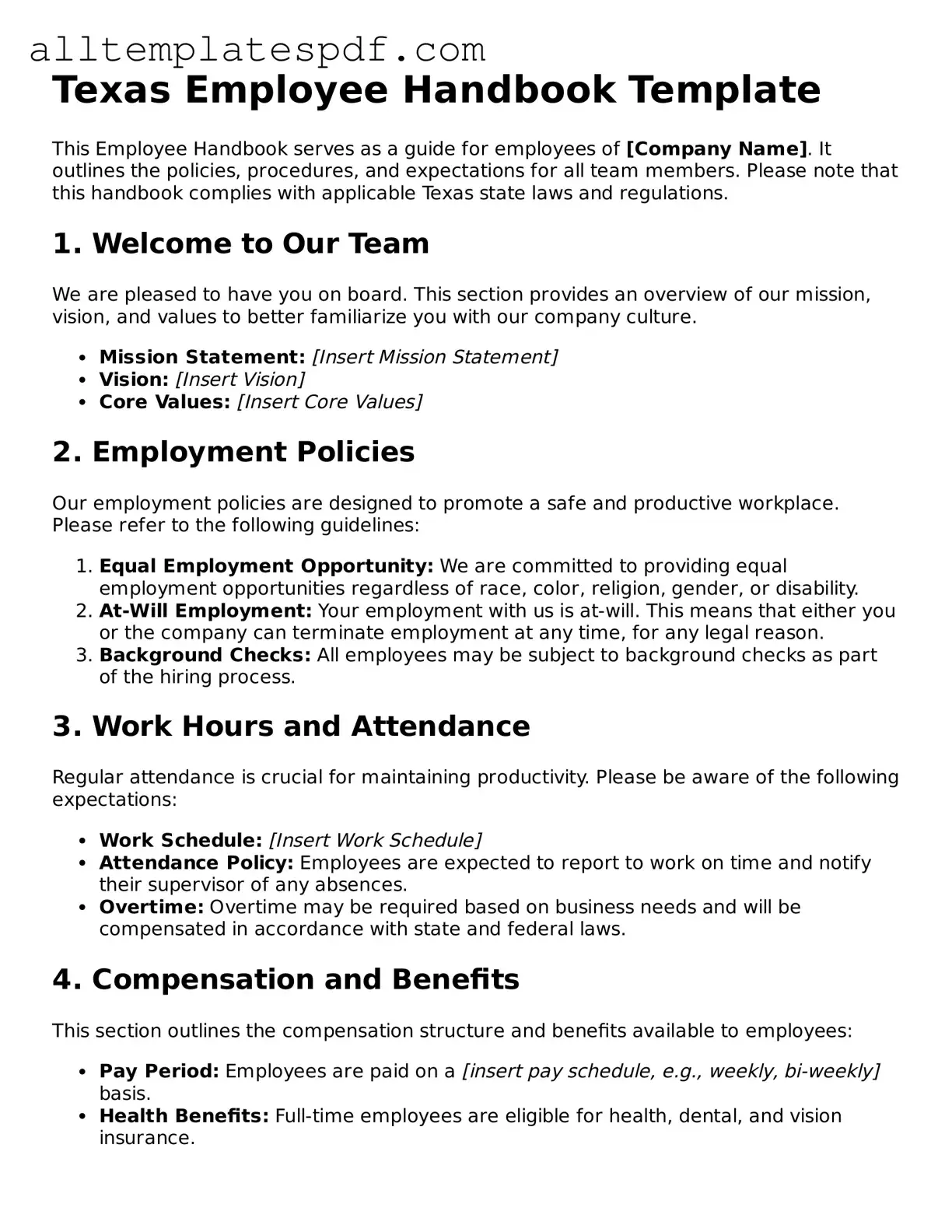Filling out the Texas Employee Handbook form can seem straightforward, but many individuals make common mistakes that can lead to confusion or complications later on. One frequent error is neglecting to read the entire document before signing. This oversight can result in misunderstandings about policies and expectations, which may affect job performance and compliance.
Another common mistake is failing to provide accurate personal information. Whether it’s a misspelled name or an incorrect address, these inaccuracies can create issues in the payroll system and may even affect benefits enrollment. Double-checking this information is crucial to ensure everything is correct.
Many people also overlook the importance of acknowledging receipt of the handbook. Simply signing the form without understanding its contents can lead to problems. Employees should take the time to review the handbook thoroughly and ask questions if anything is unclear.
Some individuals skip the section on company policies, assuming they are already familiar with the rules. This can lead to unintentional violations. It’s essential to understand the specifics of workplace conduct, attendance, and other key policies outlined in the handbook.
In addition, failing to update the form when personal circumstances change is a mistake that can have significant repercussions. Changes in marital status, dependents, or contact information should be promptly reflected in the employee records to avoid complications in benefits and communication.
Another error is not taking note of deadlines for submitting the form. Missing these deadlines can result in delays in onboarding or even employment status. Staying organized and aware of timelines is vital for a smooth transition into the workplace.
Some employees might also forget to keep a copy of the completed form for their records. Having a personal copy can serve as a reference point and help resolve any future disputes regarding policies or agreements.
Moreover, misunderstanding the consequences of violating handbook policies is a serious mistake. Employees should be aware that breaches can lead to disciplinary action, including termination. Understanding the gravity of these policies is essential for maintaining a positive work environment.
Lastly, assuming that the handbook is static can lead to problems. Policies may change, and employees should stay informed about any updates or revisions. Regularly reviewing the handbook ensures that employees remain compliant with current practices and expectations.
